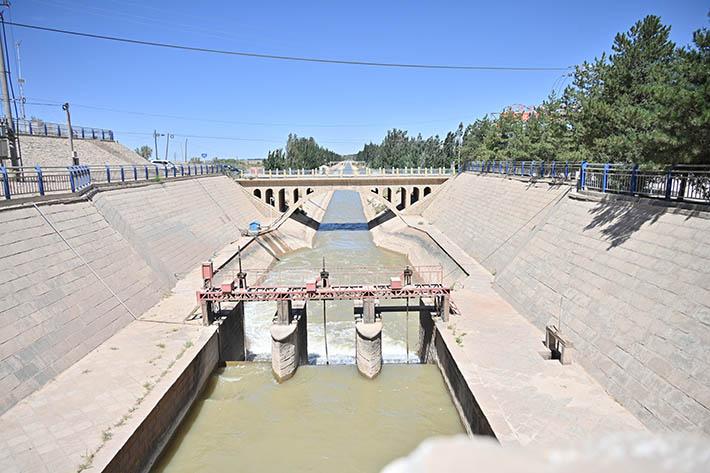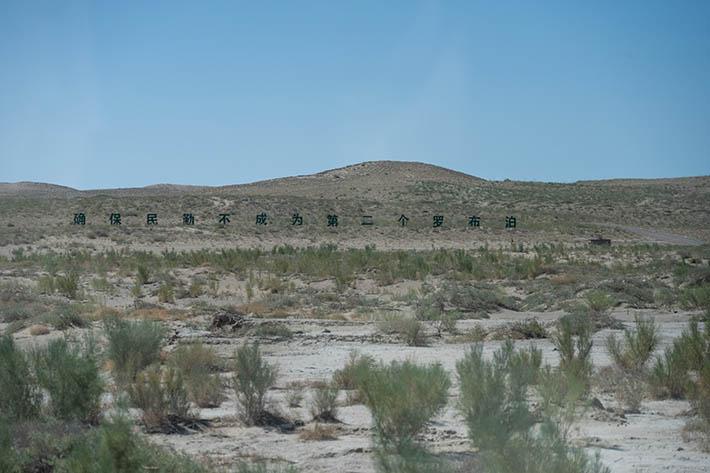Minqin County, located in the arid Gansu Province of northwest China, has a remarkable story of hope and triumph. The residents of the region faced challenges due to the unrelenting expansion of desertification, which led to the degradation of their land. Determined to fight against the invading sand, the people of Minqin embarked on a great journey to reclaim their land from the desert and prevent the sand dune expansion. Despite the rapid desertification and land degradation that Minqin was facing, with unfaltering determination and well-implemented strategies, it has emerged as a shining example of how countries facing similar environmental issues, such as Ethiopia, can tackle desertification.
Minqin’s desertification drive rests on its commitment to reverse the adverse impacts of desert expansion through afforestation. By cultivating shrubs on sandy land, Minqin managed to breathe life into what was once barren. Today, towering green forests thrive where only dry and unforgiving sands stretched for miles. Through generations of dedicated efforts to halt sand dune expansion, human-made forest coverage has increased significantly in the county.
The restoration of vegetation and the transformation of Minqin into a place of hope with blue skies, green land, clear water, and resettled communities from the mountains have allowed it to function as an oasis, serving as an important barrier to prevent the two deserts (the Tengger and Badain Jaran) from advancing, and protecting the environment in northwest China for a better future.
In addition to the remarkable afforestation efforts, Minqin’s success can be attributed to the adoption of technology. The people of Minqin have embraced modern water-saving technology, monetisation of land degradation, and detection of changes in vegetation and water sources based on scientific evidence and collaborative research.
This integrated technological system plays a vital role in guiding desertification mitigation and water resource management. While simple but impressive desertification control practices, such as building barriers with hay to create grid patterns that stabilise sand dunes, coexist, cutting-edge agricultural practices such as drip irrigation and greenhouse technology have been seamlessly integrated into Minqin’s strategies.

A channel with drip irrigation systems designed to irrigate the forest in the middle of the desert in Minqin County, Gansu Province
What Ethiopia can learn
The success of Minqin’s fight against desertification resonates with Ethiopia, which also faces challenges in its arid regions. Ethiopia has embraced afforestation through ambitious initiatives to plant millions of drought-resistant trees, effectively halting desert encroachment, and revitalising dry landscapes. The lesson is clear: afforestation plays a pivotal role in stabilising soil, halting the advancement of sand dunes, and promoting biodiversity. Ethiopia, through its Green Legacy Policy, recognised the urgency of restoring degraded lands and reconnecting with its forests’ rich heritage.
In Minqin, afforestation has become a symbol of hope and resilience, as the once-barren land now teems with life, which is also an inspirational story for a country such as Ethiopia to combat desertification in its arid regions and further support its green policy. The nation must undertake a mission to restore its degraded land by drawing lessons from Minqin’s triumph over the desert.
Similarly, Ethiopia recognises the importance of technological advancements in its fight against desertification. The nation proactively responds to controlling desertification and land reclamation using traditional techniques such as terracing, bunds, contour ploughing, and simple structures, alongside semi-traditional agricultural practices, to nurture the land and ensure its resilience.
Water management, a critical aspect of Minqin’s success, also offers an important lesson for Ethiopia given the water scarcity challenges in its arid regions. The construction of large reservoirs and interconnected channels for drip irrigation has played a significant role in safeguarding agriculture and preventing desertification in Minqin. Ethiopia can learn from this practice and initiate similar water management techniques to preserve this precious lifeline in arid regions.

Plants at Laohukou Desertification Prevention and Control Demonstration Area in Minqin County, Gansu Province, on 21 July
Community involvement
Perhaps the most inspiring lesson from Minqin is the unwavering dedication of the community. Locals actively participate in afforestation, water conservation, and sustainable land management practices, showcasing the importance of collective action. Community engagement was the driving force behind Minqin’s transformation. These efforts have not only generated a sense of ownership but also empowered communities to take up innovative initiatives in their localities.
Ethiopia, facing similar challenges where the struggle against desertification often coincides with livelihood challenges, recognises that community involvement is not merely a choice, but a necessity. To replicate Minqin’s success, Ethiopia can learn how to invest in public awareness campaigns, educational programmes and demonstration workshops, and motivate local communities to actively engage them in desertification mitigation efforts. By involving people who depend directly on land for sustenance, the fight against desertification becomes a collective responsibility, as witnessed in Minqin.
Minqin’s triumph over desertification was not achieved in isolation; it resulted from well-structured policies and collaborations. Robust institutional support and partnerships with academicians fuelled its progress. Ethiopia recognises the importance of policy and institutional support in its desertification mitigation efforts, ensuring it remains a national priority. The achievements of Minqin offer hope and resilience, not only for them but beyond their boundaries.
As climate change threatens the world, Ethiopia’s pursuit of a greener future is a necessity. Minqin’s success can inspire Ethiopia with impressive practices and techniques to combat desertification challenges.
In my journey through Minqin, I found profound connections to Ethiopia’s desertification mitigation efforts. Lessons from Minqin’s triumph in afforestation, soil conservation, water management, and community engagement can serve as a beacon of hope for Ethiopia’s arid regions. Amidst the challenges of climate change and environmental degradation, learning from one another can nurture the land and build resilience for a sustainable future. Ethiopia’s fight against desertification can be enriched by Minqin’s wisdom, ensuring the oasis of hope blooms in arid lands, step by step.
The author is an Ethiopian student from China Agricultural University.
Category
An Inspiring Triumph: Ethiopia can Learn from China’s Reversing Desertification and Promoting a Green Future
Contributor
An Inspiring Triumph: Ethiopia can Learn from China’s Reversing Desertification and Promoting a Green Future
Country
Case Study

